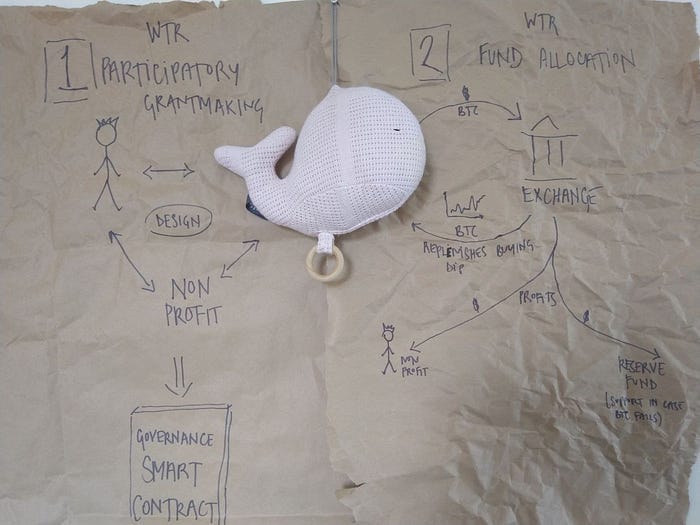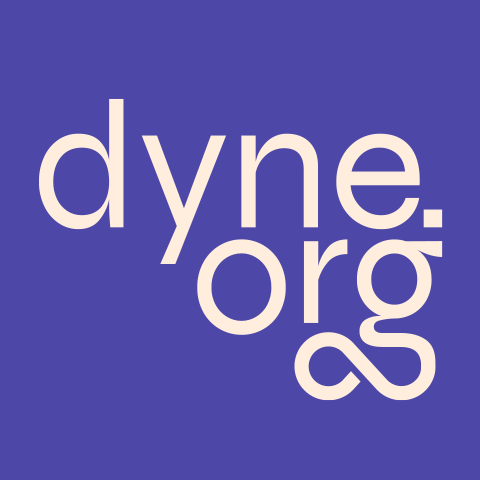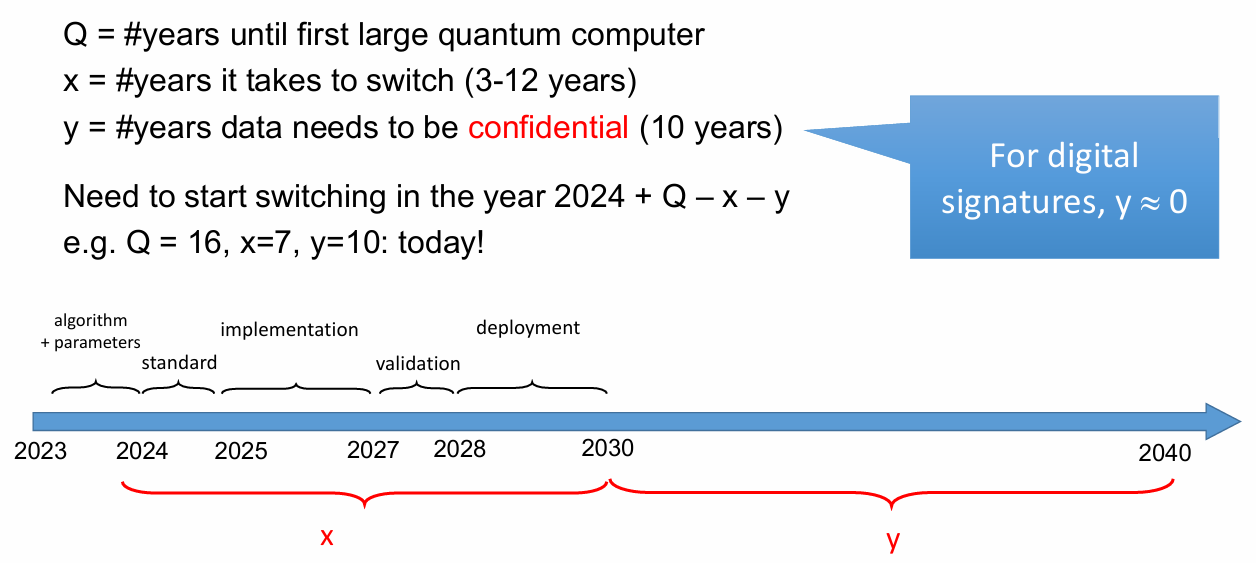#Bitcoin #ShiftThePower #cryptocharity #refugeecrisis #participatorydevelopment
This post was catalyzed by discussion within the Dyne.org community on scenes of “kids in cages” at the US-Mexico border, an image representative of the appalling conditions too many young people across the world face today.

Aware of crypto charity trends, we’ve been considering whether there is space for improvement by taking advantage of Bitcoin’s current appreciation phase alongside advancements in the way philanthropy is performed.
Our reflections have spawned Whales to the Rescue, a Bitcoin-enabled participatory grantmaking vehicle for emergency response.
Whales to the Rescue is designed to improve donation allocation efficacy for humanitarian aid and development. The basic idea is to leverage Bitcoin appreciation through participatory grantmaking to support the wellbeing of future generations and unleash a new kind of networked agency.
A cutting-edge approach to philanthropy, participatory grantmaking shares or hands over decision-making power from donors to those affected by funding decisions, and is proving deeply effective worldwide. In the case of Whales to the Rescue, the recipients are young people caught up in refugee crises, situated in war zones, and experiencing similar at-risk situations across the Global North and South. The donors, meanwhile, are Bitcoin enthusiasts, where irrespective of the funds that each may decide to donate, they are referred to as a ‘whale.’ By so doing we play on the notion of a ‘Bitcoin whale’ and simultaneously underline that from the point of view of at-risk young people, even relatively small sums of money are valuable in the changes they can bring for them.
The rationale behind the model is simple:
1. An at-risk young person (“kid”), a donor (“whale”), and a reputable non-profit working on the ground in the area where the kid is located are brought together by Whales to the Rescue for a participatory grantmaking exercise that is encoded in a governance smart contract:
- The kid expresses their needs.
- The whale proposes a Bitcoin profit allocation policy to address such needs.
- The non-profit agrees to provide tangible proof and outcomes that the funds coming from the whale are correctly allocated.
2. By trading Bitcoin market trends, the whale sells Bitcoin high on an exchange and makes a profit. The profit allocation to Whales to the Rescue is encoded in an escrow smart contract:
- A part is transferred to the non-profit through a tax-deductible donation.
- Another part is transferred to a reserve account to be unlocked in cases of adverse Bitcoin market conditions in order to avoid disruptions to donation flows.
- The rest of the profits are re-allocated to buy the following Bitcoin dip and replenish the initial stake for the next donation cycle.

These steps exemplify an intuitive way to operationalize the Whales to the Rescue mechanics. Other designs are of course possible, but here we envision how Bitcoin can be used for a participatory crypto-charity mechanism, whose humanitarian goals and financial parameters are co-created by the donor and the recipient.
Below is a real-world scenario describing the behavior of Whales to the Rescue:
A kid is held in an asylum seeker detention centre in Sicily. Whales to the Rescue brings together the kid, a Bitcoin trader with a philanthropic ethos and a refugee response non-profit working with Sicilian asylum seekers to agree on a donation policy that meets the needs expressed by the kid. For example, funds are allocated to the kid’s secure migration process including lawyer’s fees, healthcare, transportation arrangements and then paying for a family reunion (bringing the kid’s sibling safely to Italy). Once the funds are funneled for these initial needs, they then take the form of an allowance to pay for the kid’s daily expenses, education, post-trauma therapy and talent development.
At the impact level, Whales to the Rescue responds to a key challenge in humanitarian aid and development, where donor priorities often do not reflect the needs on the ground.
By engaging in participatory grantmaking (also known as the #ShiftThePower movement in the philanthropic sector), the whale and the kid become collaborative leaders and equal protagonists, where the young person guides the process rather than simply being labeled as a beneficiary, or even worse, not seeing support at all.
Together, these collaborative leaders decide how to manage Bitcoin’s Social Return on Investment (SROI) — measured in both financial terms and above all human security — ensuring the health, wealth, and dignity for the kid’s future.
Participatory impact assessment can be used to measure the SROI, such as IA4SI (Impact Assessment for Social Innovation): a methodological framework based on a quali-quantitative multi-stakeholders approach, which engages project coordinators, their partners, project users and citizens.
The technical implementation can be supplied by merging two modular codebases developed by the Dyne.org Foundation: the Zenroom process virtual machine and the Social Wallet API. Used in concert, these tools can implement governance and escrow smart contracts that the participatory grantmaking process has designed.
We plan to run a design simulation sprint to co-create a prototype with core stakeholders. This would engage young people who have found secure routes out of their at-risk situations to share their experiences, together with an actual Bitcoin whale, a selection of Bitcoin enthusiasts / activist-philanthropists, non-profits working in migrant justice and human security, as well as Dyne.org developers and a facilitator from Whales to the Rescue.
Whales to the Rescue is a response to one of the central causes of 21st century systemic breakdown: a gap too wide between the wealthy and the disenfranchised. It is an attempt to not only bridge this gap but prove the powerful changemaking potential that comes with bringing different minds, hearts and innovative technologies together. We welcome your thoughts at this early stage, contact us at whales@dyne.org.
anique vered and Radium, April 2021.
Tune in to the discussion 💬
(These services are bridged: join your favorite and reach them all)
🗨️ Matrix
🗨️ Telegram
🗨️ Discord
Support Dyne 🫱🏿🫲🏾
🪙 Bitcoins: bc1qz9wz2f9swcefra2tfrhk4fx49evqsv03m9nx4l
☕ Ko-Fi
🍴 Github.com
🧁 LiberaPay
🍥 Patreon.com
Follow Dyne.org 🗞️
Social Media everywhere!
🐘 Mastodon
🎬 Peertube
🐭 Lemmy
📸 Instagram
🐦 Xitter
👔 Linkedin
🪞 Facebook
✍️ Medium






